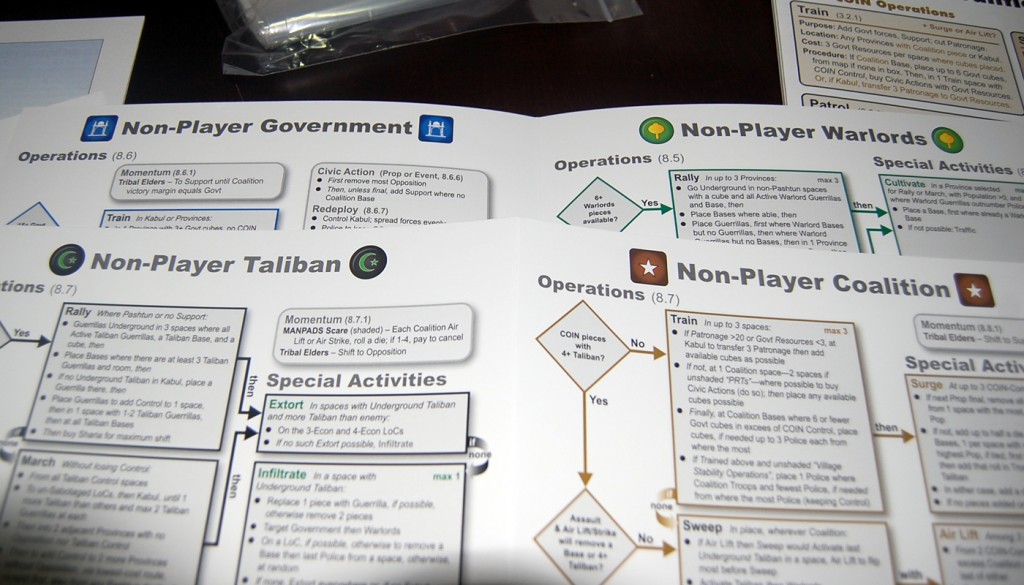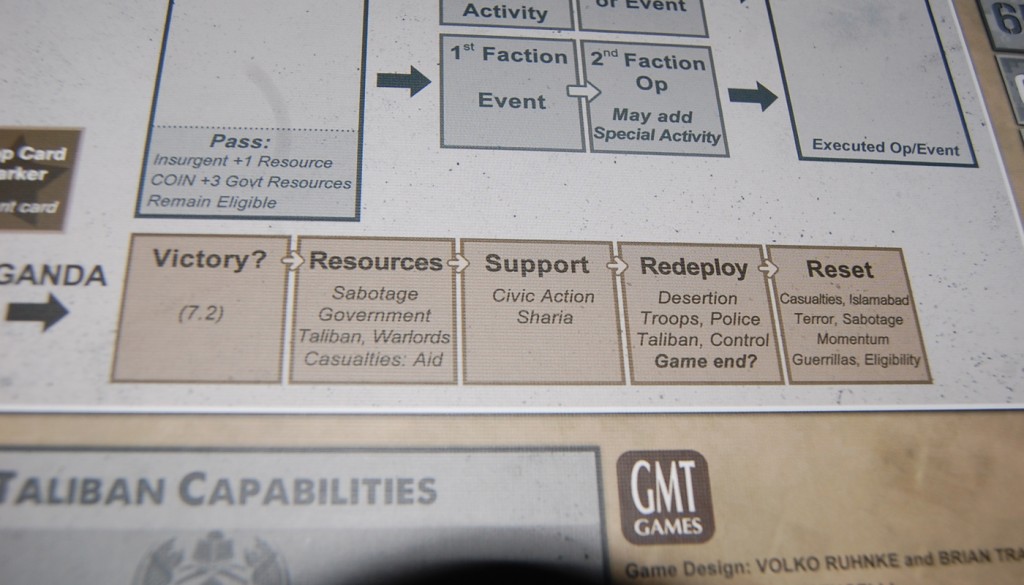A Distant Plain – First Look!
GMT’s newest entrant into the COIN Series from Volko Ruhnke bring collaborator Brian Train into the fold. A Distant Plain explores counterinsurgency operations in Afghanistan, and we’ve been following the developments for quite a while. And while I didn’t force the designers to collaborate at gunpoint or anything, I did book them both into the same panel at Connections in 2011, so somewhere along the way I’m going to claim 1.87% of the credit of getting these two excellent designers together.
Brant Guillory, 18 October, 2013
This is a pretty hefty box. It’s a standard footprint, but several inches thick.
And there’s a reason for it – this box is loaded: player aids, 2 books, a countersheet, a bag of other markers, and a deck of cards.
The countersheet is full of admin markers.
Four player aid cards lay out the capabilities and specific rules for each faction.
There are also “AI” cards that control the actions of any faction not being controlled by a player.
Other player aids include a map showing where the “random” spaces are on the map, and the sequence of play.
The rulebook is well-illustrated, and provides solid explanations of the components and rules.
Best of all – a tutorial scenario!
Dice and markers are solid and attractive components.
The deck of cards controls the turn-by-turn action in the game.
The detail of the cards clearly lays out the game effects, and are illustrated with photos from the conflict.
The map is no small footprint. It’s big, and solid.
The map includes a lot of admin charts, tracks, and information around the margins.
And the necessary information is never far away.
The turn sequence is right on the map – and right where it’s most-needed.
We’ve already got a sense of what to expect with the game. And now it’s time to see how it delivers. The GrogHeads review will be along soon, after we get a few plays under our belts. Stay tuned!


















[…] has covered A Distant Plain with an interview with the designers, and the photos of the unboxing. All well and good, of course, but how does it […]